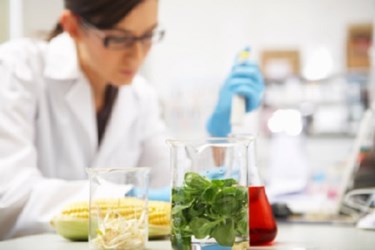Traceability And Transparency Are Key Aspects Of Food Pathogen Testing
By Melissa Lind, contributing writer

FSMA regulations require food manufacturers and processors to be proactive in their approach to food-safety events. Because of this, many food producing companies are beefing up traceability practices within their supply chains. Adding even more urgency to bolstering traceability practices is the growing complexity and global nature of modern supply chains, along with consumers demanding to know who harvested and transported the food product, where the food and its ingredients came from, and how the food was handled on its journey from harvest to table.
There is a difference between traceability and transparency — traceability allows food products to be traced backward and forward through the supply chain. Transparency is an open endeavor, which, ultimately, makes tracing food an easier and more honest process. Despite being different, traceability and transparency are interrelated, particularly when it comes to pathogen testing.
Safety Across The Supply Chain
Modern traceability programs are tasked with not only being able to track food up stream, but to ensure that the food and ingredients come to and leave facilities safe and free of pathogens. This means testing is required. Food testing can be done in-house if your company has the facilities or it can be sent to an outside laboratory. In keeping with the traceability and transparency requirements, it is essential to be able to identify the route and methods that were used to transport and test.
Laboratory Safety
Traceability and transparency are both essential when ensuring that pathogen testing is adequate, but each requires different means and procedures for security.
To show traceability, the laboratory must:
- Be able to show a chain-of-custody for the test sample. This is documentation of the sample leaving the facility, transportation, arrival at the facility, and transfer to the testing laboratory personnel. Documentation must be able to withstand an audit with no gaps in custody documents
- Use best methods of documentation. This often means utilizing electronic tracking means, such as RFID or Barcode identification
To show transparency, the laboratory must:
- Produce clearly understandable results showing what and how samples are tested and what test results indicate with a clear definition of out-of-range results
- Make testing methods and validation records available for review and should include controls testing for each batch sample run
The food facility should be able to access subject matter experts so that food safety managers are confident in their understanding of the process and results. This enables the company to react quickly in the event of a system failure or to make decisions about future processes.
Laboratory Certificate of Analysis
Whenever testing is performed and the product receives a clean bill, a Certificate of Analysis (CofA) should be provided. This documentation provides proof of product quality. For manufacturers of ingredients, further processors will want to be able to access CofA information. Retailers may demand the same information from finished food processors. The CofA will ensure those customers that your company’s food is free of pathogens and other contaminants, and that validated, recognized methods were used in testing. Companies are tasked with ensuring that the testing process meets current demands for both traceability and transparency.
Pathogen test traceability and transparency is a necessity for both suppliers and their customers who must ensure that the food supply chain is safe at every step. This assurance is required whether manufacturers and processors are able to provide in-house testing or are required to contract with qualified food safety laboratories.
